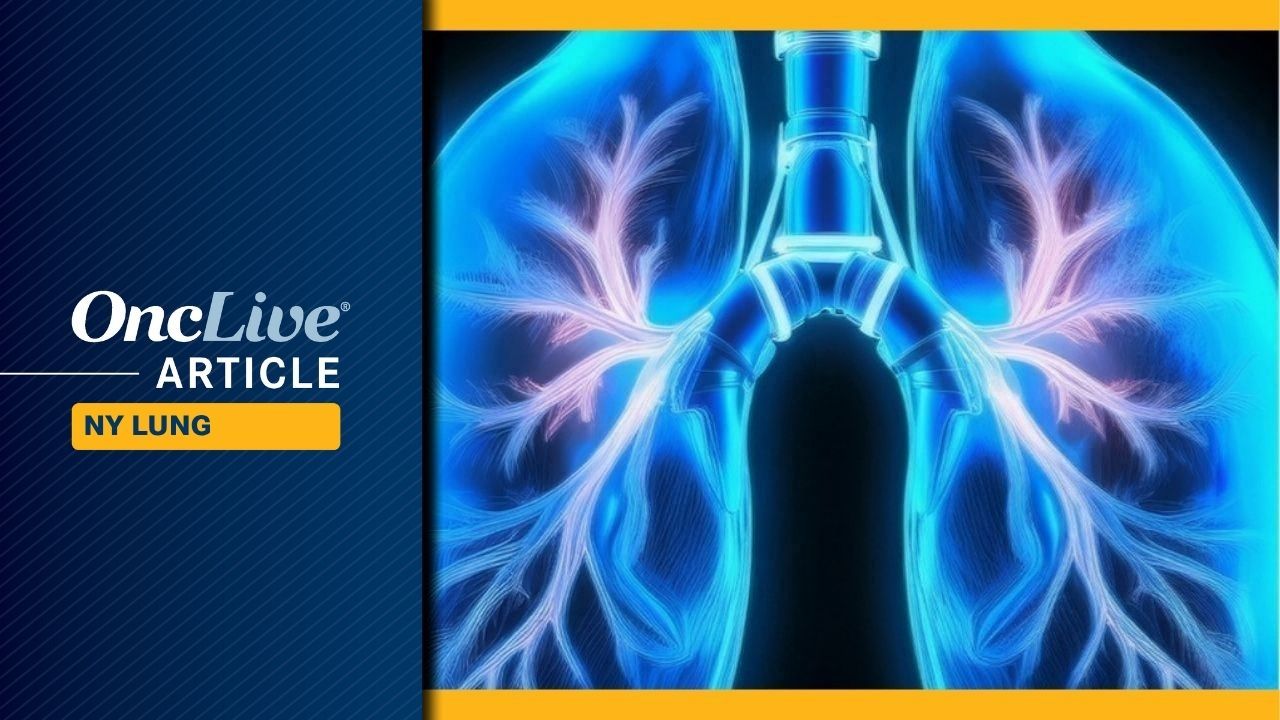Science
New Advances Transform Non-Small Cell Lung Cancer Management

The field of biomarker testing for non-small cell lung cancer (NSCLC) is experiencing a significant shift, moving beyond traditional genomic markers to incorporate innovative protein-based and computationally derived indicators. This evolution is largely attributed to the introduction of new therapies, particularly antibody-drug conjugates (ADCs), and a deeper understanding of therapeutic resistance and vulnerabilities. Dr. Soo-Ryum Yang, an assistant attending pathologist and co-director of Clinical Biomarker Development at Memorial Sloan Kettering Cancer Center in New York, highlighted these advancements during his presentation at the 20th Annual New York Lung Cancers Symposium on November 15, 2025.
In his talk, Yang identified four key trends reshaping NSCLC management: the emergence of protein-based immunohistochemistry (IHC) biomarkers for ADCs, the actionability of tumor suppressor genes, the potential of synthetic lethality in treatment, and the rise of computational pathology. Despite progress, a critical challenge remains: the scarcity of tissue samples. Yang emphasized the urgent need for multiplex IHC testing and the integration of broad panel next-generation sequencing (NGS) and artificial intelligence (AI) to enhance personalized therapy for NSCLC patients.
Current approaches are shifting focus from merely identifying mutated genes to assessing the expression levels of specific proteins on cancer cells. This new strategy can unveil treatment options previously overlooked. While PD-L1 IHC testing is well-established for guiding checkpoint inhibitor therapy, it is now also being utilized for ADC applications. Yang pointed to two essential protein biomarkers in NSCLC: HER2 and c-MET overexpression. He explained that these biomarkers are distinct from their genetic counterparts, with HER2 overexpression present in up to 20% of patients, though only 3% exhibit the highest level of IHC 3+ staining.
The recent approval of fam-trastuzumab deruxtecan-nxki (T-DXd; Enhertu) for HER2-positive solid tumors, including NSCLC, was supported by the phase 2 DESTINY-Lung01 study (NCT03505710). Yang suggested that the HER2 scoring guidelines used for gastric cancer should also apply to NSCLC testing. Furthermore, c-MET overexpression is noted in approximately 17% of EGFR wild-type cases, with actionable c-MET-high status defined by over 50% of tumor cells exhibiting 3+ staining.
In May 2025, the FDA granted accelerated approval to telisotuzumab vedotin-tllv (teliso-V; Emrelis) for patients who exhibit high levels of c-MET. Yang acknowledged that integrating HER2 and c-MET IHC screening poses challenges to existing diagnostic workflows. To address this, he proposed a flexible approach that allows institutions to develop optimized diagnostic strategies based on their resources and expertise.
Yang also highlighted the significance of KRAS mutations, which occur in up to 40% of lung adenocarcinomas. The KRAS G12C mutation is particularly prevalent, followed by G12V and G12D mutations. Notably, KRAS G12D mutations are linked to lower PD-L1 expression and poorer outcomes with chemoimmunotherapy. Targeted therapies such as sotorasib (Lumakras) and adagrasib (Krazati) are already in use, while clinical trials for additional therapies are ongoing. For instance, the KRAS G12D inhibitor zoldonrasib (RMC-9805) demonstrated a 61% overall response rate in a phase 1 study (NCT06040541).
Yang also discussed the implications of STK11 and KEAP1 mutations, which affect up to 20% of lung cancers and often co-occur with KRAS mutations. These mutations create an immunosuppressive environment, resulting in primary resistance to immunotherapy. Findings from the phase 3 POSEIDON trial (NCT03164616) suggest that combining a CTLA-4 inhibitor with a PD-L1 inhibitor and chemotherapy can improve progression-free survival (PFS) and overall survival (OS) for patients with these mutations.
Another emerging target is MTAP, which plays a crucial role in cancer metabolism. Deletions of the MTAP gene occur in up to 18% of lung cancers, significantly impacting patient outcomes. Yang noted that the detection of MTAP deletions requires broad-panel NGS, as PCR is not feasible. He proposed a workflow that utilizes NGS for initial screening, followed by confirmatory IHC testing in ambiguous cases.
Yang also introduced the cell surface protein TROP2 as an attractive target for ADC development. The anti-TROP2 ADC datopotamab deruxtecan-dlnk (Dato-DXd) is currently being evaluated in clinical trials, including the phase 3 TROPION-Lung01 study (NCT04656652). The trial showed a PFS benefit with Dato-DXd compared to docetaxel, although no significant OS benefit was observed. The study did not enrich for a specific biomarker, but an AI-driven method utilizing computational pathology could enhance predictive capabilities by measuring TROP2 expression.
As the landscape for NSCLC management evolves, the integration of protein analysis, AI insights, and novel therapeutic strategies is paving the way for more personalized medicine. Yang concluded by expressing optimism about the potential for multiplex IHC testing to complement molecular markers and NGS in the coming years. “We’re at a point where we should be starting to explore the feasibility of multiplex IHC,” he stated. The advancements in biomarker testing promise to extend personalized treatment options to a broader range of lung cancer patients.
-

 Lifestyle4 months ago
Lifestyle4 months agoLibraries Challenge Rising E-Book Costs Amid Growing Demand
-

 Sports4 months ago
Sports4 months agoTyreek Hill Responds to Tua Tagovailoa’s Comments on Team Dynamics
-

 Sports4 months ago
Sports4 months agoLiverpool Secures Agreement to Sign Young Striker Will Wright
-

 Lifestyle4 months ago
Lifestyle4 months agoSave Your Split Tomatoes: Expert Tips for Gardeners
-

 Lifestyle4 months ago
Lifestyle4 months agoPrincess Beatrice’s Daughter Athena Joins Siblings at London Parade
-

 World4 months ago
World4 months agoWinter Storms Lash New South Wales with Snow, Flood Risks
-

 Science4 months ago
Science4 months agoTrump Administration Moves to Repeal Key Climate Regulation
-

 Science3 months ago
Science3 months agoSan Francisco Hosts Unique Contest to Identify “Performative Males”
-

 Business4 months ago
Business4 months agoSoFi Technologies Shares Slip 2% Following Insider Stock Sale
-

 Science4 months ago
Science4 months agoNew Tool Reveals Link Between Horse Coat Condition and Parasites
-

 Sports4 months ago
Sports4 months agoElon Musk Sculpture Travels From Utah to Yosemite National Park
-

 Science4 months ago
Science4 months agoNew Study Confirms Humans Transported Stonehenge Bluestones









